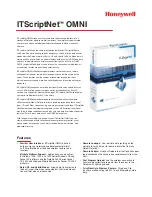
ExtremeWare XOS 11.5 supports only the Summit X450 family of switches and the BlackDiamond 8800 series switch.
ExtremeWare XOS 11.5 Command Reference Guide
805
12
Commands for Virtual Routers
This chapter describes commands for:
●
Creating and deleting virtual routers
●
Configuring and managing virtual routers
●
Displaying information about virtual routers
Virtual Routers
ExtremeWare XOS supports virtual routers. This capability allows a single physical switch to be split
into multiple virtual routers. This feature separates the traffic forwarded by a virtual router from the
traffic on a different virtual router.
There are two types of virtual routers in an ExtremeWare XOS system:
●
System virtual routers
These are the special virtual routers created by ExtremeWare XOS during system boot up, and they
cannot be deleted or renamed. There are a total of three of these special virtual routers in the
ExtremeWare XOS system.
●
User virtual routers
These are the virtual routers created and named by users.
NOTE
User virtual routers are supported only on the BlackDiamond 10808 and BlackDiamond 12804 switches.
Each virtual router maintains a separate logical forwarding table, which allows the virtual routers to
have overlapping address spaces. Because each virtual router maintains its own separate routing
information, packets arriving on one virtual router will never be switched to another.
With multiple virtual routers contained on a single physical switch, some commands in ExtremeWare
XOS now require you to specify to which virtual router the command applies. For example, when you
use the ping command, you must specify from which virtual router the ping packets are generated.
Many commands that deal with switch management use the management virtual router by default.
NOTE
The term virtual router is also used with the Virtual Router Redundancy Protocol (VRRP). VRRP uses the term to
refer to a single virtual router that spans more than one physical router, which allows multiple switches to provide
redundant routing services to users.
















































